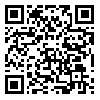Fri, Apr 4, 2025
[Archive]
Volume 16, Issue 2 (June 2020)
IJEEE 2020, 16(2): 248-258 |
Back to browse issues page
Download citation:
BibTeX | RIS | EndNote | Medlars | ProCite | Reference Manager | RefWorks
Send citation to:



BibTeX | RIS | EndNote | Medlars | ProCite | Reference Manager | RefWorks
Send citation to:
Dodangeh M, Ghaffarzadeh N. A New Fast and Accurate Fault Location and Classification Method on MTDC Microgrids Using Current Injection Technique, Traveling-Waves, Online Wavelet, and Mathematical Morphology. IJEEE 2020; 16 (2) :248-258
URL: http://ijeee.iust.ac.ir/article-1-1488-en.html
URL: http://ijeee.iust.ac.ir/article-1-1488-en.html
Abstract: (6772 Views)
In this paper, a new fast and accurate method for fault detection, location, and classification on multi-terminal DC (MTDC) distribution networks connected to renewable energy and energy storages presented. MTDC networks develop due to some issues such as DC resources and loads expanding, and try to the power quality increasing. It is important to recognize the fault type and location in order to continue service and prevent further damages. In this method, a circuit kit is connected to the network. Fault detection is performed with the measurement of the current of the connected kits and the traveling-waves of the derivative of the fault current and applying to a mathematical morphology filter, in the Fault time. The type and location of faults determinate using circuit equations and current calculations. DC series and ground arc faults are considered as DC distribution network disturbances. The presented method was tested in an MTDC network with many faults. The results illustrate the validity of the proposed method. The main advantages of the proposed fault location and classification strategy are higher accuracy and speed than conventional approaches. This method robustly operates to changing in sampling frequency, fault resistance, and works very well in high impedance fault.
Keywords: MTDC , Fault Detection and Classification , Mathematical Morphology , Current Injection Kit , Online Wavelet
Type of Study: Research Paper |
Received: 2019/05/01 | Revised: 2019/07/17 | Accepted: 2019/07/17
Received: 2019/05/01 | Revised: 2019/07/17 | Accepted: 2019/07/17
| Rights and permissions | |
 |
This work is licensed under a Creative Commons Attribution-NonCommercial 4.0 International License. |








